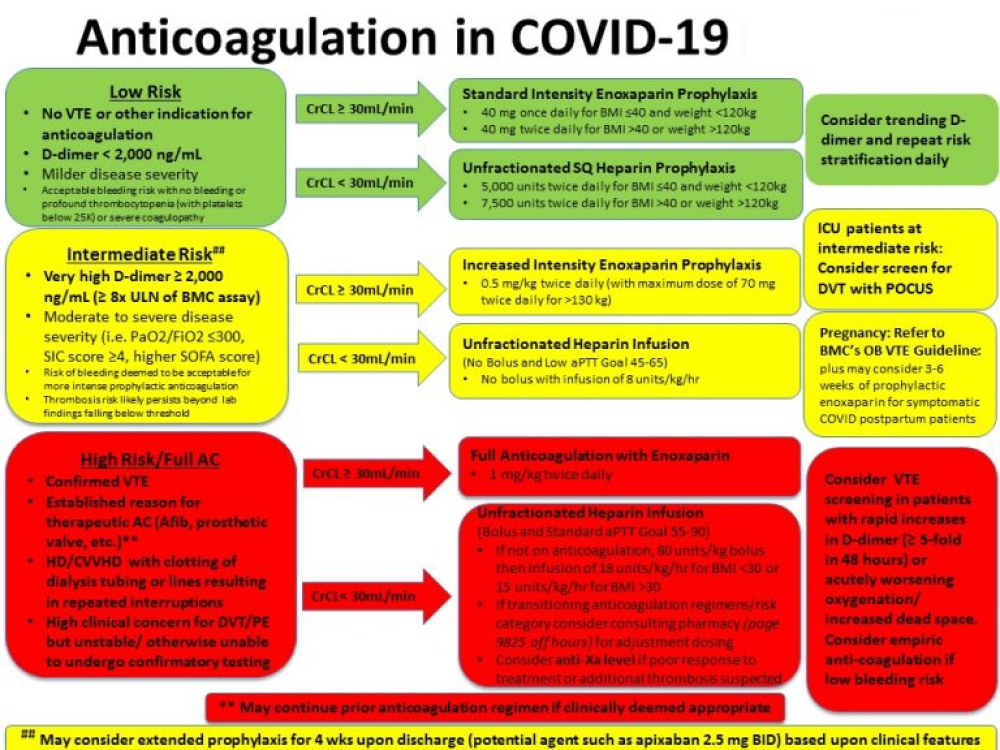- Authors: http://orcid.org/0000-0002-3809-8926Atanu Chandra1, 6289Uddalak Chakraborty2, Shrestha Ghosh1, Sugata Dasgupta3
Abstract
Rising incidence of thromboembolism secondary to COVID-19 has become a global concern, with several surveys reporting increased mortality rates. Thrombogenic potential of the SARS-CoV-2 virus has been hypothesised to originate from its ability to produce an exaggerated inflammatory response leading to endothelial dysfunction. Anticoagulants have remained the primary modality of treatment of thromboembolism for decades. However, there is no universal consensus regarding the timing, dosage and duration of anticoagulation in COVID-19 as well as need for postdischarge prophylaxis. This article seeks to review the present guidelines and recommendations as well as the ongoing trials on use of anticoagulants in COVID-19, identify discrepancies between all these, and provide a comprehensive strategy regarding usage of these drugs in the current pandemic.
This article is made freely available for use in accordance with BMJ’s website terms and conditions for the duration of the covid-19 pandemic or until otherwise determined by BMJ. You may use, download and print the article for any lawful, non-commercial purpose (including text and data mining) provided that all copyright notices and trade marks are retained.
Introduction
The novel beta-coronavirus, appropriately named SARS-CoV-2 by the International Committee of Taxonomy of Viruses, belongs to a family of single-stranded RNA viruses, members of which have been recognised as causative agents of the SARS-CoV and Middle East respiratory syndrome coronavirus outbreak in 2002 and 2012, respectively.1 2 Presently, the novel COVID-19 poses a major global health crisis, having been declared a pandemic on 11 March 2020 by the WHO.
Over the past several months, an overwhelming amount of literature suggests an increased risk of thromboembolic manifestations associated with COVID-19.2 Several hypotheses have been suggested to understand the underlying pathophysiology behind development of a prothrombotic state in COVID-19 such as exaggerated inflammatory response resulting in activation of the coagulation cascade and endothelial injury.3 4 Usage of anticoagulants in COVID-19 remains an area of conjecture with no definite guidelines published to date highlighting the timing, dosage and duration of anticoagulation as well as the drug of choice. Most internationally published guidelines, based on consensus statements and expert opinions, recommend therapeutic doses of heparin only in patients diagnosed with or highly suspected of developing macrothrombi such as pulmonary embolism (PE) or deep vein thrombosis (DVT). However, these guidelines including those by CHEST, rarely address the requirement of post discharge thromboprophylaxis.5
For More Information: https://pmj.bmj.com/content/early/2021/04/12/postgradmedj-2021-139923
